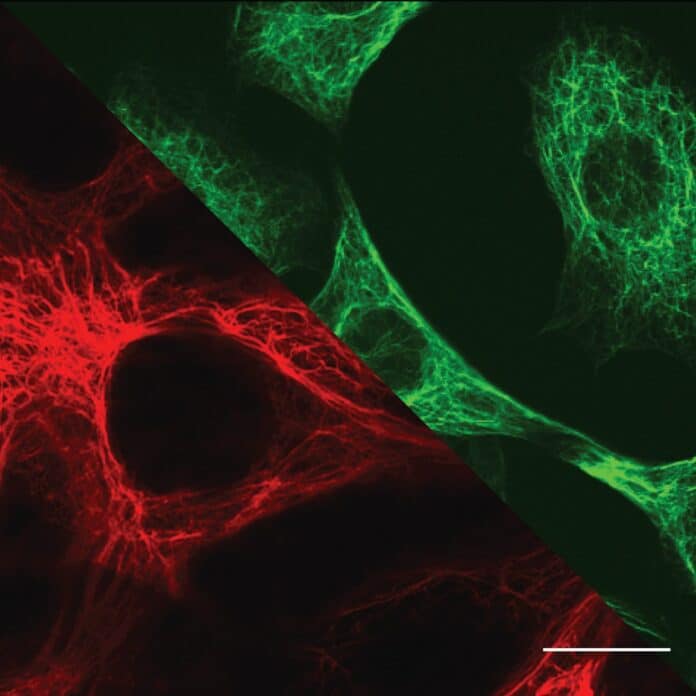An intracellular biopolymer network, which includes intermediate filaments expressed in a cell-type-specific manner, controls the mechanics of the cell. Keratin and vimentin are two crucial intermediate filaments expressed by motile and non-motile cells, respectively. The cells’ cellular mechanics and dynamic features vary due to the differential expression of these proteins. The topic of how the mechanical properties already vary on a single filament level is raised by this observation.
The cytoskeleton of mobile and stationary cells differs in several ways. The protein filament structure gives the cells stability, extensibility, and resistance to outside stimuli. “Intermediate filaments” are significant in this situation. It’s interesting to note that stationary and mobile cells contain two distinct types of intermediate filaments.
Scientists at the University of Göttingen and ETH Zurich have succeeded in precisely measuring and describing the mechanical properties of the two filaments. In the process, they discovered parallels with non-biological materials.
Using optical tweezers, scientists investigated the behavior of filaments under tension. The filaments’ ends were linked to small plastic beads, which they maneuvered carefully with the aid of a laser beam. Vimentin and keratin, two different filaments, were stretched as a result. The forces required for stretching were figured out by the researchers, as well as how the various filaments responded to repeated stretching.
Surprisingly, the two separate filaments respond differently to repeated stretching: vimentin filaments soften while maintaining their length, and keratin filaments lengthen while maintaining their stiffness. The experimental outcomes are consistent with computer simulations of molecular interactions: in vimentin filaments, the researchers postulate that structures open up, akin to multicomponent gels; in keratin filaments, they postulate that structures shift against one another, akin to metals.
Both mechanisms explain that the networks of intermediate filaments in the cytoskeleton can be strongly deformed without damage. However, this protective factor is explained by fundamentally different physical principles.
Dr. Charlotta Lorenz, the first author of the study, said, “These results extend our understanding of why different cell types have such different mechanical properties.”
Professor Sarah Köster, from Göttingen University’s Institute of X-Ray Physics and leader of the study, adds: “We can learn from nature and think about the design of new, sustainable, and transformable materials whose properties can be chosen or designed to fit the requirements exactly.”
Journal Reference:
- Charlotta Lorenz, Johanna Forsting, Robert W. Style, Stefan Klumpp, Sarah Köster. Keratin filament mechanics and energy dissipation are determined by metal-like plasticity. Matter (2023). Doi: 10.1016/j.matt.2023.04.014
